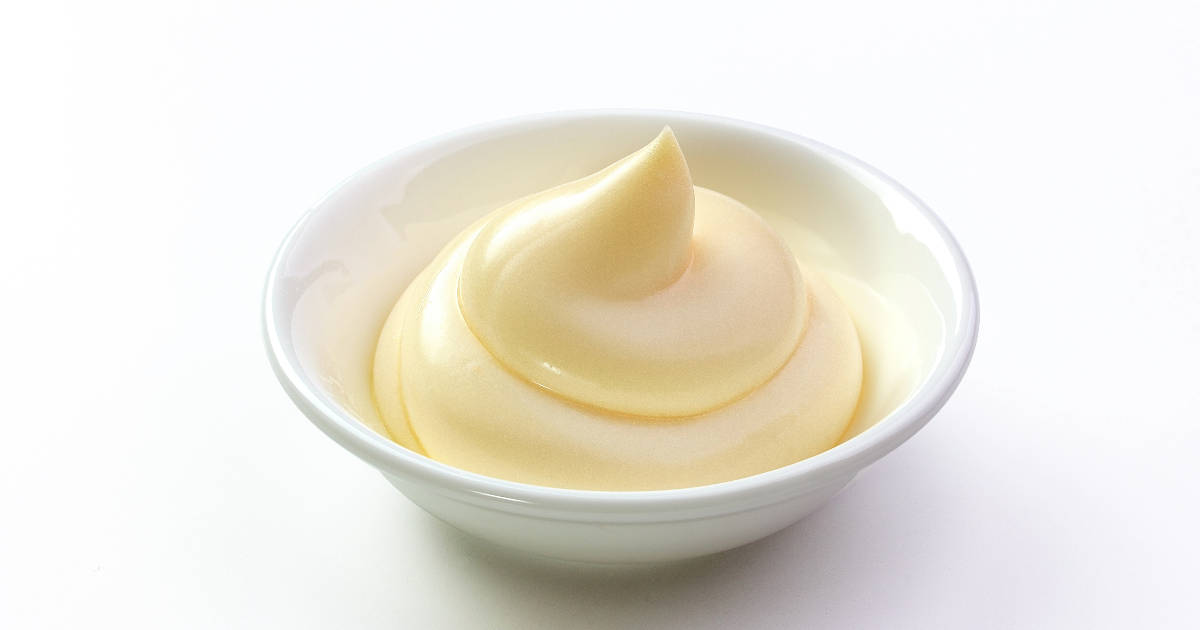When it comes to making sandwiches or topping crackers and veggies, two of the most commonly reached-for condiments are cheese spread and mayonnaise. While both creamy and flavorful, they actually have quite distinct properties.

To better understand the unique benefits of each, let's explore the differences between cheese spread and mayonnaise. We'll compare their ingredients, texture, flavor, and best uses, so you can make the most of these two versatile spreads.
Ingredients: The Building Blocks of Cheese Spread vs. Mayonnaise
The ingredients used to make cheese spread and mayonnaise give each its unique properties.
Cheese spread is typically made from processed cheese - a blend of natural cheeses that have been melted and combined with emulsifiers, stabilizers, and flavorings. So you'll often see ingredients like cheddar, Swiss, or American cheeses, plus agents to bind it all together smoothly.
Mayonnaise, on the other hand, relies on completely different core ingredients. It's an emulsion, meaning it combines two liquids that normally don't mix - oil and water. To achieve this, mayonnaise is made with oil, egg yolks, vinegar or lemon juice, and seasonings. The egg yolks contain lecithin, which acts as the emulsifier allowing the oil and water to blend together.
So in summary:
- Cheese spread highlights cheese and binding agents as the main ingredients.
- Mayonnaise relies on oil, egg yolks, acid, and seasoning to create its creamy emulsion.
Texture and Consistency: Smooth and Spreadable vs. Fluid and Pourable

The differing ingredients also lead to differences in the texture of cheese spread and mayonnaise.
Cheese spread has a thick and smooth consistency by design - it needs to be easily spreadable! So manufacturers aim for a dense, malleable texture.
Mayonnaise has a creamy and smooth texture as well, but it's generally more fluid and pourable compared to the denser cheese spread. This allows mayo to act as a dressing or binder, while still providing richness.
Some key texture comparisons:
- Cheese spread is thick and spreadable for easy application.
- Mayonnaise has more fluidity for drizzling, pouring, and blending.
Flavor: Distinct Cheese vs. Tangy with a Neutral Profile
When it comes to flavor, cheese spread and mayonnaise differ significantly:
Cheese spread aims to pack a big cheesy punch. The specific cheese flavors can vary - mild cheddar, sharp gouda, pungent blue cheese - but cheese is intended to be the star.
Mayonnaise has a more neutral flavor profile. Its tanginess from vinegar or lemon comes through, but the overall goal is to enhance other ingredients rather than dominate.
Key flavor contrasts:
- Cheese spread spotlights cheesy, saltiness.
- Mayonnaise provides an acidic tang with a neutral, enhancing effect.
Usage: Spreading vs. Blending
The unique traits of cheese spread and mayonnaise also make them suited for different culinary uses:
Cheese spread is the go-to for spreading onto crackers, bread, sandwiches, and more. Its thick, spreadable texture makes it perfect for this purpose. Cheese spread can also be used as a filling in recipes when you want cheesy pockets or layers.
Mayonnaise acts as a building block in recipes rather than just a spread. Its blendable texture means it can serve as the base for dressings, dips, sauces, and even dishes like egg or chicken salad. Mayonnaise is also frequently used in sandwiches and burgers as a moisture-providing condiment.
Some common uses:
- Cheese spread is ideal for spreading onto foods or using it as a filing.
- Mayonnaise shines as a base for dressings, sauces, and moisture-adding sandwich condiments.
Make Delicious Recipes with Cheese Spread or Mayonnaise
Now that you know the differences between these two popular condiments, you can better choose which to use in your cooking and baking.
For a quick and tasty snack, slather some cheese spread onto crackers or bread. Go classic with a cheddar or nacho cheese spread, or get creative with blue cheese and walnuts or goat cheese with apricot preserves.
To make a flavorful dressing or dip, let mayonnaise take the lead. Making aioli, remoulade sauce, or even ranch dip? Use mayonnaise as your neutral-flavored base. Then blend in garlic, spices, or herbs to take it to the next level.
FAQ
What is the main difference in ingredients between cheese spread and mayonnaise?
The main ingredients in cheese spread are cheese, often processed and blended with emulsifiers, plus stabilizers and flavorings. Mayonnaise relies on oil, egg yolks, vinegar or lemon juice, and seasonings to create its emulsion.
Which has a thicker, more spreadable texture?
Cheese spread is designed to be thick and spreadable, with a dense and creamy texture perfect for spreading onto crackers and breads. Mayonnaise has a smooth texture as well, but it tends to be more fluid and pourable.
Which one has a more prominent flavor profile?
Cheese spread packs a bold, cheese-forward flavor, which can range from mild to sharp depending on the variety. Mayonnaise has a more subtle, tangy flavor that aims to enhance other ingredients rather than overpower.
What are some common uses for each condiment?
Cheese spread shines as a spread and is also useful as a filling for recipes. Mayonnaise is a versatile base for many dressings, dips, and sauces. It also adds moisture as a condiment in sandwiches and burgers.
Conclusion
After breaking down the differences between these two popular condiments, you can make more informed choices when cooking and baking. Use creamy, cheesy cheese spread to top crackers or give sandwiches an extra flavor punch. Let tangy, neutral mayonnaise form the base of your next flavorful sauce or dressing.
With an understanding of their distinct qualities and ideal uses, you can get the most out of cheese spread and mayonnaise. So go ahead - spread, blend, and enjoy these two staple condiments in your kitchen!

